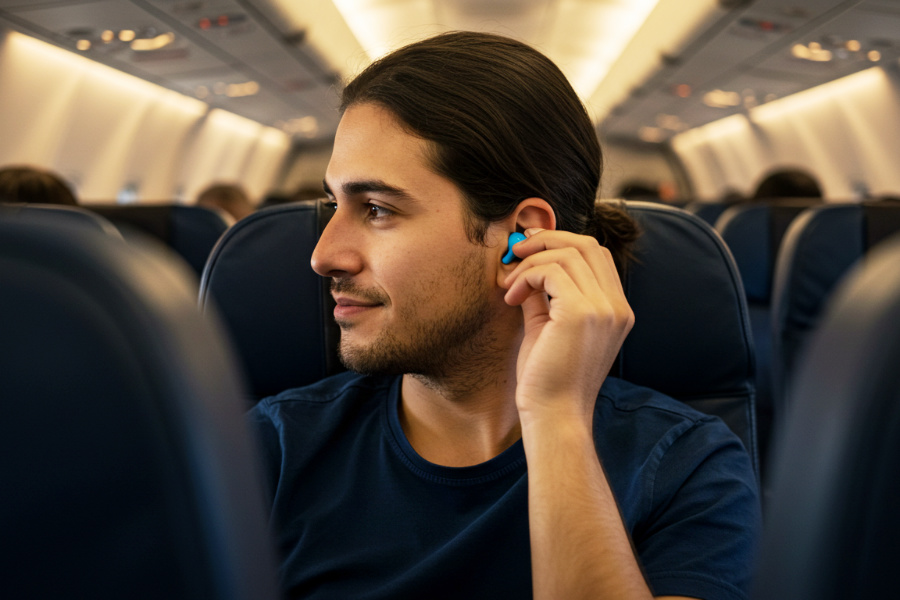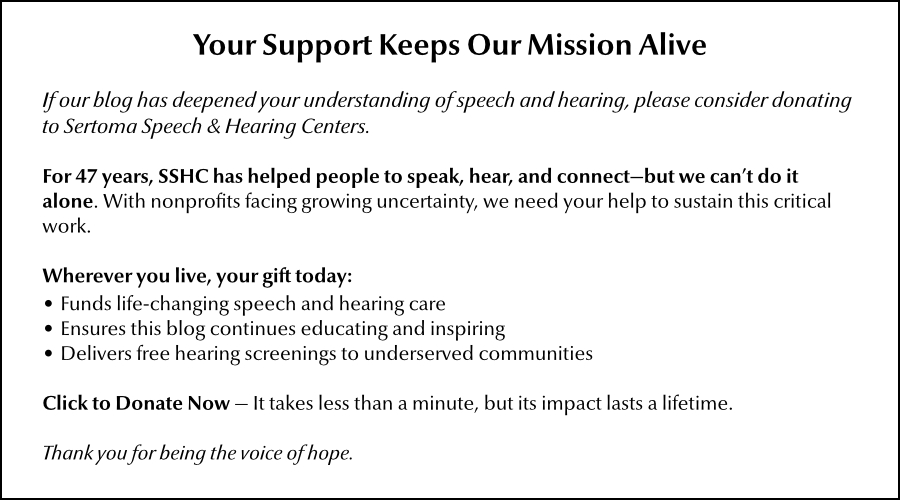Flying can be challenging when you have hearing loss. The constant noise in airports and loud aircraft engines can make hearing difficult, especially when wearing hearing aids.
Why it matters
Flying with hearing loss doesn't have to be stressful. With the right preparation, you can make air travel comfortable and enjoyable.
By the numbers
Aircraft engines generate noise levels between 75 to 85 decibels inside the cabin. This is loud enough to potentially damage hearing and can overwhelm hearing aids. Prolonged exposure to sounds at this volume can cause additional hearing stress, making it challenging for people with hearing loss to manage in-flight audio environments.
What to know
Most airlines want to help—you just need to speak up. When you're booking your ticket, look for the special assistance section. Or email them beforehand.
Here's the assistance they typically provide:
-
Written safety info instead of trying to lip-read the flight attendant
-
Someone will check on you during the flight
-
A hand getting through the terminal when you land
-
Extra attention if there's an emergency
Be sure to get flight updates sent straight to your phone. Download your airline's app for gate changes, or sign up for text alerts, which is far better than straining to hear garbled announcements echoing through the terminal.

A closer look
Seat selection can make or break your flight. Always ask for something up front when you book. The front of the plane is noticeably quieter since the engines are further back. First row is golden—you'll only hear passenger chatter from behind you.
Many airlines will waive fees for priority seating if you have a disability. Worth asking about when you call.
Pack some earplugs for the engine noise. And bring your entertainment. Those seatback screens? Their captions are usually terrible, and you might not even be able to use the airline's headphones with your hearing aids anyway.
The takeaway
For the ear pressure changes you feel during takeoff and landing, grab some gum or hard candy before you board. The chewing motion helps your ears adjust to the pressure changes.
Swallowing works too by opening your Eustachian tubes and helping to balance pressures.
Know your rights as a traveler with a disability. Take a moment to review your airline's policies before you fly.
Need More Support?
Still have questions about flying with hearing loss? Here are some helpful resources:
- Contact your audiologist for personalized travel advice
- Check out hearing loss travel forums online
- Visit the Hearing Loss Association of America for travel guides
Want specific help? Your audiologist can:
- Review your hearing aid settings for travel
- Suggest communication strategies
- Provide a travel-ready hearing care plan
The goal is to make your journey as smooth and comfortable as possible.
★ For facts about hearing loss and hearing aid options, grab your copy of The Hearing Loss Guide.
★ Sign up for our newsletter for the latest on Hearing aids, dementia triggered by hearing loss, pediatric speech and hearing, speech-language therapies, Parkinson's Voice therapies, and occupational-hearing conservation. We publish our newsletter eight times a year.
Don't let untreated hearing loss spoil your travel.
Crest Hill, IL - 630-633-5060 | Palos Hills, IL - 708-599-9500


